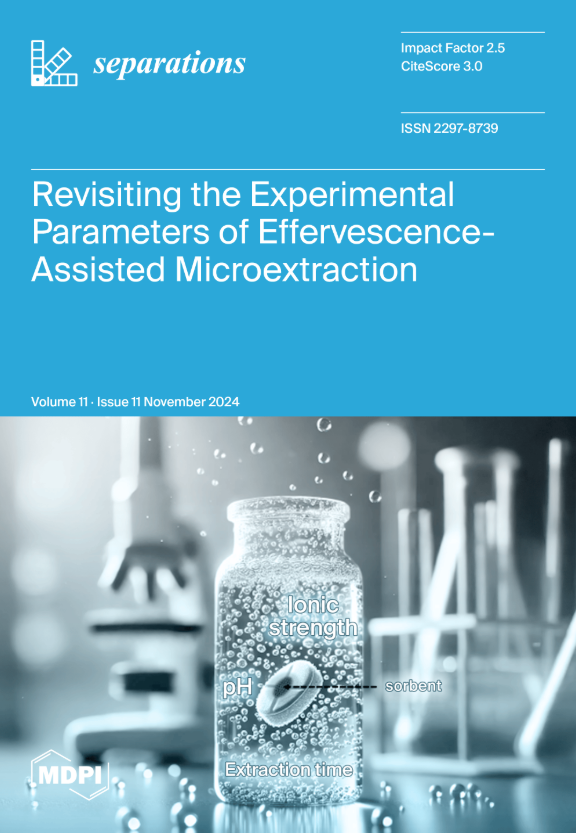粉煤灰对在填料塔中使用 MEA 和 DEA 溶液去除 CO2 的传质性能的影响
IF 2.7
4区 工程技术
Q3 CHEMISTRY, ANALYTICAL
引用次数: 0
摘要
在目前的燃煤发电厂中,燃烧后二氧化碳捕集过程中烟气中积累的未收集飞灰是一个重大问题,因为它可能会影响二氧化碳吸收剂和吸收塔的性能。为了确定粉煤灰对二氧化碳吸收到单乙醇胺(MEA)和二乙醇胺(DEA)水溶液中的传质性能的影响,我们使用装有θ-环无规填料的小型填料塔进行了实验研究。这些研究是在不同的操作参数下进行的,包括溶液温度、液气比 (L/G)、填料高度和粉煤灰浓度。结果表明,粉煤灰对出口二氧化碳浓度的影响主要体现在实验过程的初始阶段。此外,在使用 MEA 和 DEA 溶液时,粉煤灰的存在会导致体积总传质系数(KGav)降低,而增加粉煤灰浓度会进一步加剧这种负面影响。不过,粉煤灰对 KGav 降低的影响与其化学成分并无明显关系,而是取决于运行参数。随着溶液温度、液气比(L/G)和填料高度的增加,不同溶液的 KGav 值呈上升趋势。随着溶液温度和填料高度的增加,粉煤灰对 MEA KGav 的负面影响保持相对稳定。与 MEA 相比,在相同的实验条件下,粉煤灰对 DEA 溶液的负面影响更大。分析表明,粉煤灰对 KGav 的不利影响主要源于粉煤灰能够改变填料塔内吸收液的分布状态。本文章由计算机程序翻译,如有差异,请以英文原文为准。
Effect of Fly Ash on the Mass Transfer Performance of CO2 Removal Using MEA and DEA Solutions in a Packed Tower
The accumulation of uncollected fly ash from flue gas in post-combustion CO2 capture processes is a significant concern in current coal-fired power plants due to its potential impact on the performance of CO2 absorbent and absorption towers. In order to determine the effect of fly ash on the mass transfer performance of CO2 absorption into monoethanolamine (MEA) and diethanolamine (DEA) aqueous solutions, experimental studies were carried out using a small-sized packed tower equipped with θ-ring random packing. These studies were conducted under various operating parameters, including solution temperature, liquid/gas ratio (L/G), packing height, and fly ash concentration. The results show that the effect of fly ash on the outlet CO2 concentration was primarily observed during the initial stages of the experimental process. Moreover, the presence of fly ash leads to a reduction in the volumetric overall mass transfer coefficient (KGav) when using MEA and DEA solution, and increasing the fly ash concentration further exacerbates this negative impact. However, the effect of fly ash on the reduction in KGav is not significantly related to its chemical composition but rather depends on the operational parameters. With increasing solution temperature, liquid/gas ratio (L/G), and packing height, the KGav values for different solutions exhibit an upward trend. The negative effect of fly ash on KGav remains relatively stable for MEA as solution temperature and packing height increase. Compared to MEA, fly ash has a greater negative effect on DEA solution under the same experimental conditions. The analysis reveals that the detrimental effect of fly ash on KGav primarily stems from its ability to alter the distribution state of the absorption liquid within the packed tower.
求助全文
通过发布文献求助,成功后即可免费获取论文全文。
去求助
来源期刊

Separations
Chemistry-Analytical Chemistry
CiteScore
3.00
自引率
15.40%
发文量
342
审稿时长
12 weeks
期刊介绍:
Separations (formerly Chromatography, ISSN 2227-9075, CODEN: CHROBV) provides an advanced forum for separation and purification science and technology in all areas of chemical, biological and physical science. It publishes reviews, regular research papers and communications. Our aim is to encourage scientists to publish their experimental and theoretical results in as much detail as possible. There is no restriction on the length of the papers. The full experimental details must be provided so that the results can be reproduced. There are, in addition, unique features of this journal:
Manuscripts regarding research proposals and research ideas will be particularly welcomed.
Electronic files and software regarding the full details of the calculation and experimental procedure, if unable to be published in a normal way, can be deposited as supplementary material.
Manuscripts concerning summaries and surveys on research cooperation and projects (that are funded by national governments) to give information for a broad field of users.
The scope of the journal includes but is not limited to:
Theory and methodology (theory of separation methods, sample preparation, instrumental and column developments, new separation methodologies, etc.)
Equipment and techniques, novel hyphenated analytical solutions (significantly extended by their combination with spectroscopic methods and in particular, mass spectrometry)
Novel analysis approaches and applications to solve analytical challenges which utilize chromatographic separations as a key step in the overall solution
Computational modelling of separations for the purpose of fundamental understanding and/or chromatographic optimization
 求助内容:
求助内容: 应助结果提醒方式:
应助结果提醒方式:


